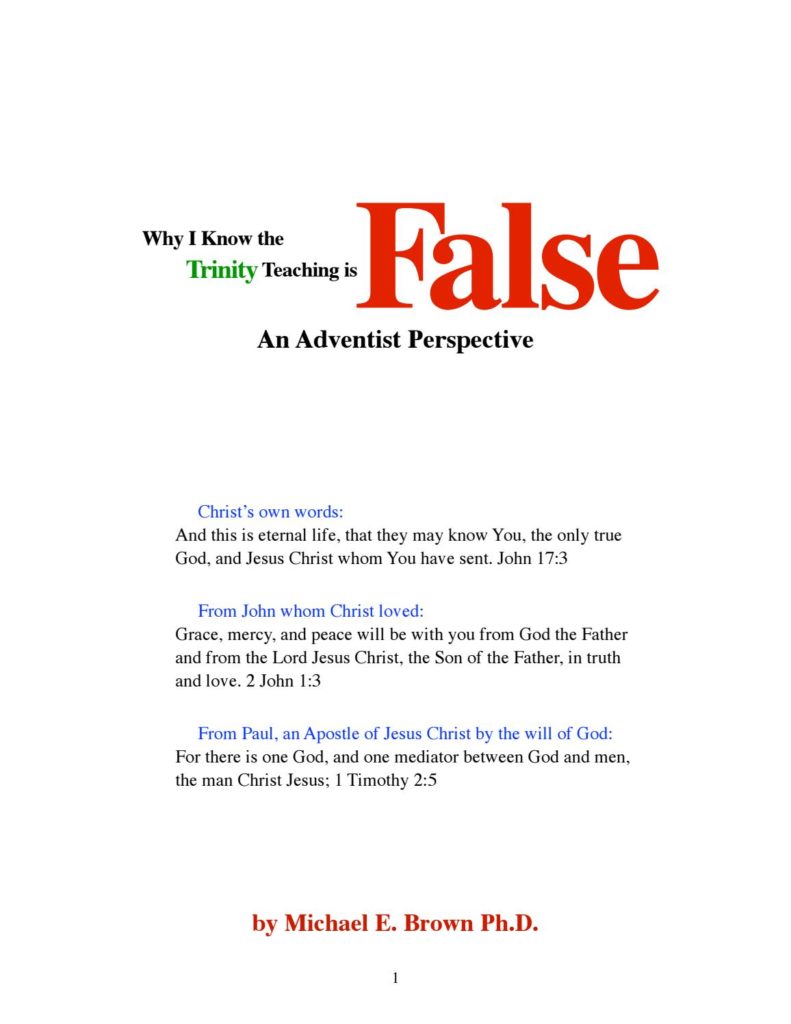Most scripture doctrine presentations are implicitly Trinitarian; they identify the Father as the lead author of the scriptures, the Son as their central theme, and the Spirit as the immediate agent of prophetic and apostolic inspiration. Son through the Spirit, to borrow the famous description of JIPacker. More words, evangelicals recognize that the gospel of Jesus Christ, the central theme of Scripture, is implicitly Trinitarian. The Gospel refers to God the Father’s love for the chosen sinners, the suffering and glory of God the Incarnate Son, and the communion of the saints in God the Spirit. The Gospel is Trinitarian in its root and fruit.
As healthy as this implicit Trinitarianism is, there is more to say about the relationship between the Trinity and Scripture: the Trinity is not only the principal author of Sacred Scripture and the organic structure of the gospel, it is the profound dimension of Sacred Scripture. Writing, its main theme and its end. Matthew Bates’s recent book, The Birth of the Trinity: Jesus, God, and the Spirit in the New Testament and the early Christian interpretation of the Old Testament [The Birth of the Trinity: Jesus, God, and the Spirit in the New Testament and the Christian Interpretation of the Old Testament], opens an illuminating window on the dimension of the Trinitarian depth of Sacred Scripture.
- Bates’s book focuses on “prosopological exegesis.
- “Christian will.
- Prosopological exegesis is a ”person-centered reading strategy’ that seeks to determine the identities of speakers and listeners in Old Testament texts.
- Which would otherwise be ambiguous.
- In light of the clear determination of their identities in the Apostolic Gospel.
- The New Testament and early Christian interpreters used this type of exegesis.
- For example.
- Mark 12:35-37 clarifies the identities of the speaker and listener in Psalm 110 as God the Father speaking to God the Son about his eternal and mesthenic generation.
- And points out that David heard this dialogue between the Father and the Son “in the Holy Spirit.
- “.
Does neotestamentary and prosopological paleocrystalline exegesis hear the story of the?Talk about God? It unfolds from its root in the eternal generation and the appointment of the Son as Messiah, through the mission, death, and resurrection of the Incarnate Son. , until his final triumph in the installation of the Son at the right hand of the Father.
In Psalm 110. 3-4, we hear the Father say what? From the womb of the mother, before dawn of the morning skylight, I have begat you ?, and we heard him appoint this engendered Eternal Son as the mesianic king-priest: ?Are you an eternal priest, according to the order of Melchizedek?(Compare Psalm 2. 6-9).
In Psalm 40:6-8, we hear the Son speak with the Father about the body he has prepared for him and the Son’s desire to fulfill the Will of the Father in his incarnate mission (see also Hebrews 10:5-7).
In Psalm 22 we hear, from the cross, the cry of the Son’s agony (v. 1-2) and the Son praising the Father in the midst of a gathering, people after the Father raised him from the dead (vv. 22-25).
In Psalm 45. 6-7, we hear the Son being greeted when the Father leads him to his eternal throne after obediently fulfilling the Father’s mission. Your throne, O God, is eternal and perpetual; Scepter of justice is the scepter of your kingdom. You love justice and abhor evil; So has God, your God, anointed you with oil of joy more than your companions?(See also Hebrews 1. 8-9).
Such a reading strategy reveals the dimension of the Trinitarian depth of the scriptures in at least two ways. First, it reveals that Holy Scripture is not just the Word of God for us; it also testifies of God’s Word to God. How wonderful to read the Bible as a divinely inspired opportunity to hear God’s intra-Trinitarian conversation! Second, this reading strategy helps us see that the great love story that unfolds in the pages of Scripture is not simply the story of God’s love for chosen sinners. Is this the story of the Father’s love for his Eternal Son and his desire to make him the head of redeemed humanity, and is it the story of the Son’s love for the Father and his willingness to incarnate and endure suffering? until death on the cross? because of his zeal for the glory of the Father among the nations (Psalm 69. 9; John 2. 17). Prosopological exegesis helps us see that the story of God’s love for us is just a variation on the larger theme of the Father’s love for the Son in the Spirit.
Prosopological exegesis is a person-centered reading strategy that helps us see the person’s centrality in the subject and purpose of Scripture. Does this teach us that the purpose of revelation and the accounting of revelation is to reveal the intratrinital life of God’s communication and communion and to welcome us into this embrace of life, at the expense of the Trinitarian God himself (Matthew 11:25-27; 1 John 1. 3-4). Sacred Scripture is the product of the Holy Spirit, which has enabled prophets and apostles to hear the words of grace of the Father for the Son and the Son for the Father, and which allows us to hear the testimony of prophets and apostles so that through their testimony we may also have fellowship with the Father through the Son in the spirit.
By: Scott R. Wain. © 2015 Original Reformation21: The Trinity Depth of Scripture
Translation: Leonardo Galdino. © 2016 Faithful Ministério. All rights reserved. Website: MinistryFiel. com. br. Original: The Trinitarian Depth of The Scriptures
Authorizations: You are authorized and encouraged to reproduce and distribute this material in any format, provided that the author, his ministry and translator are no longer no longer modified and not used for commercial purposes.

